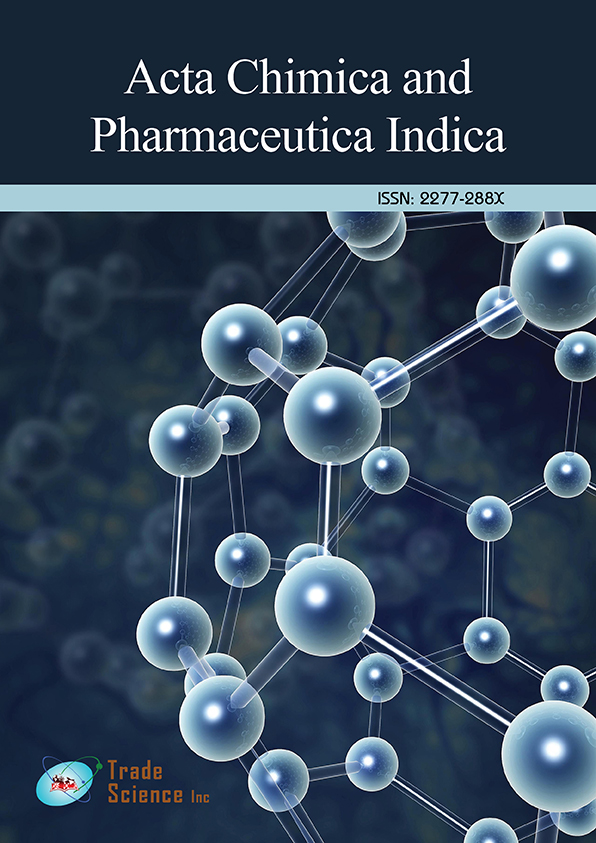Perspective
, Volume: 14( 1) DOI: 10.37532/2277-288X.2024.14(1).203Analyzing Pharmaceutical Quality Control through Thermal Analysis Methods
- *Correspondence:
- Kathrine likDepartment of Food Control, Faculty of Pharmacy, Germany, E-mail: likkathrine99@gmail.com
Received: February 02, 2024, Manuscript No. tsacpi-24-127417; Editor Assigned: February 06, 2024, Pre-QC No. tsacpi-24-127417(PQ); Reviewed: February 21, 2024, QC No. tsacpi-24-127417(Q); Revised: February 26, 2024, Manuscript No. tsacpi-24-127417(R); Published: February 29, 2024. DOI: 10.37532/2277-288X.2024.14(1).203
Citation: lik K. Analyzing Pharmaceutical Quality Control through Thermal Analysis Methods. Acta Chim Pharm Indica 2024;14(1):1-2.
Abstract
Thermal analysis techniques play a vital role in pharmaceutical quality control, encompassing a range of methods including Differential Scanning Calorimetry (DSC), Thermogravimetric Analysis (TGA), and Dynamic Mechanical Analysis (DMA). These methods are instrumental in assessing the thermal characteristics of pharmaceutical substances, a crucial aspect for guaranteeing the quality, stability, and effectiveness of products. This article offers insight into thermal analysis methods and their significance in pharmaceutical quality control.
Ensuring the safety, efficacy, and uniformity of pharmaceutical products relies heavily on rigorous quality control measures. Among these, thermal analysis methods stand out as indispensable tools, offering deep insights into the thermal characteristics and behaviors of pharmaceutical substances. Differential Scanning Calorimetry (DSC), Thermogravimetric Analysis (TGA), and Dynamic Mechanical Analysis (DMA) are key techniques utilized in pharmaceutical quality control.
DSC employed to gauge heat changes associated with phase transitions and chemical reactions in pharmaceutical materials across varying temperatures. It aids in determining crucial parameters such as melting points, glass transition temperatures, and reaction kinetics. Conversely, TGA tracks weight variations in relation to temperature or time, facilitating the assessment of thermal stability, decomposition, and moisture content in pharmaceutical compounds. DMA, on the other hand, delves into mechanical properties like modulus, stiffness, and viscoelastic behavior in response to temperature fluctuations.
The applications of thermal analysis in pharmaceutical quality control are multifaceted
1. Purity and Composition Assessment: Thermal analysis, particularly DSC, enables the identification of characteristic thermal events associated with the constituents of pharmaceutical materials, thereby assessing their purity and composition.
2. Stability Studies: Thermal analysis methods are pivotal in stability studies, elucidating how pharmaceutical products degrade or alter under different temperature and time conditions. This knowledge is essential for determining suitable storage parameters.
3. Formulation Optimization: Thermal analysis aids in refining pharmaceutical formulations by examining the compatibility and interactions among various components. It contributes to achieving the desired properties and stability of the product.
4. Quality Assurance of Drug Delivery Systems: Thermal analysis techniques are instrumental in evaluating the thermal performance of drug delivery systems such as liposomes, nanoparticles, and microspheres, ensuring their stability and efficacy.
5. Batch-to-Batch Consistency: Thermal analysis facilitates the monitoring of batch-to-batch consistency, empowering manufacturers to uphold the desired quality and characteristics of pharmaceutical products across multiple production cycles.
Conclusion
Thermal analysis techniques play a vital role in pharmaceutical quality control, offering essential insights into the thermal characteristics of pharmaceutical substances. These methods enable informed decision-making throughout the stages of product development, manufacturing, and storage. Utilizing tools such as DSC, TGA, and DMA, pharmaceutical firms can elevate product standards, adhere to regulatory requirements, and ultimately promote patient welfare by delivering pharmaceutical products that are both safe and efficacious.
